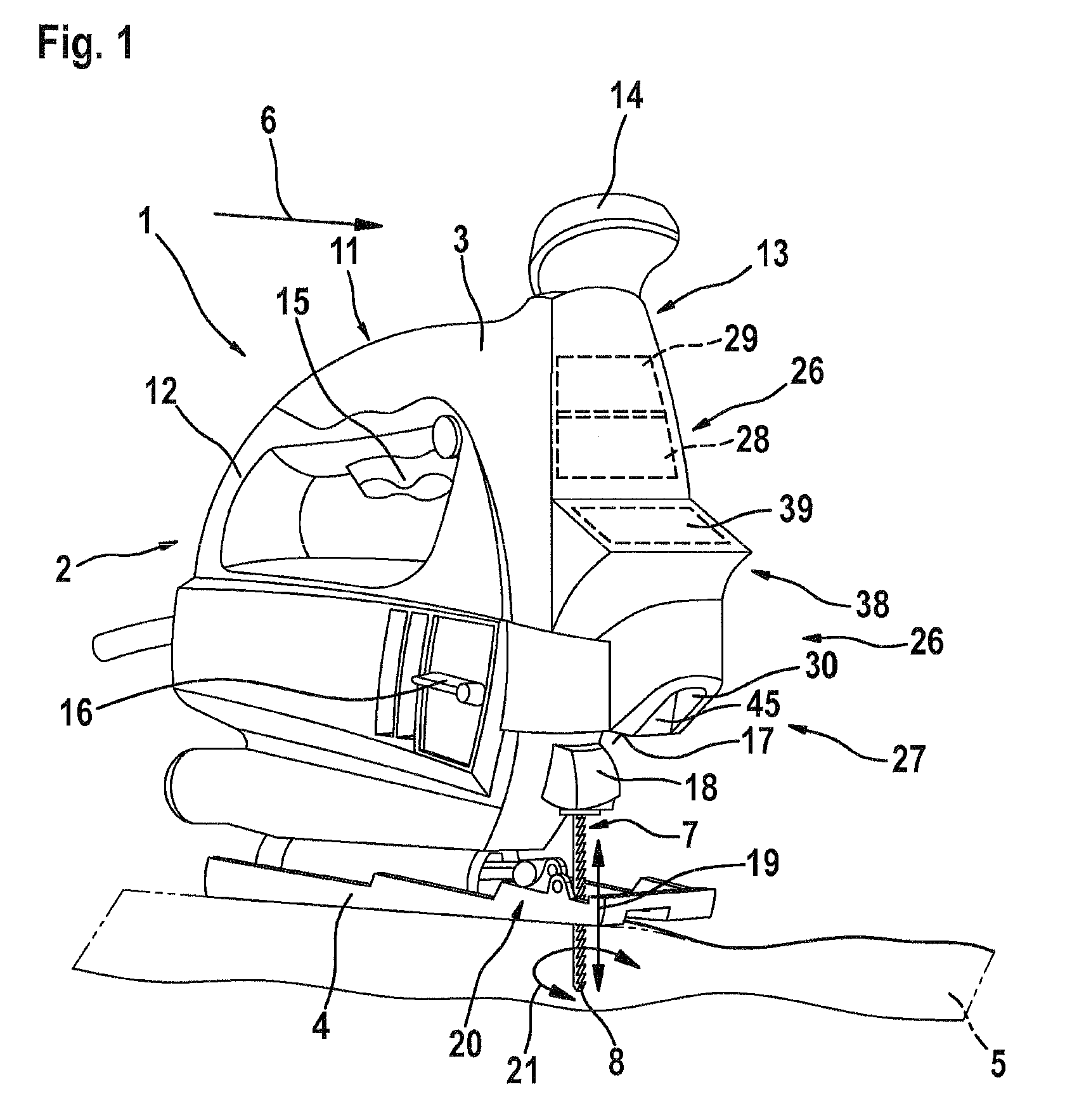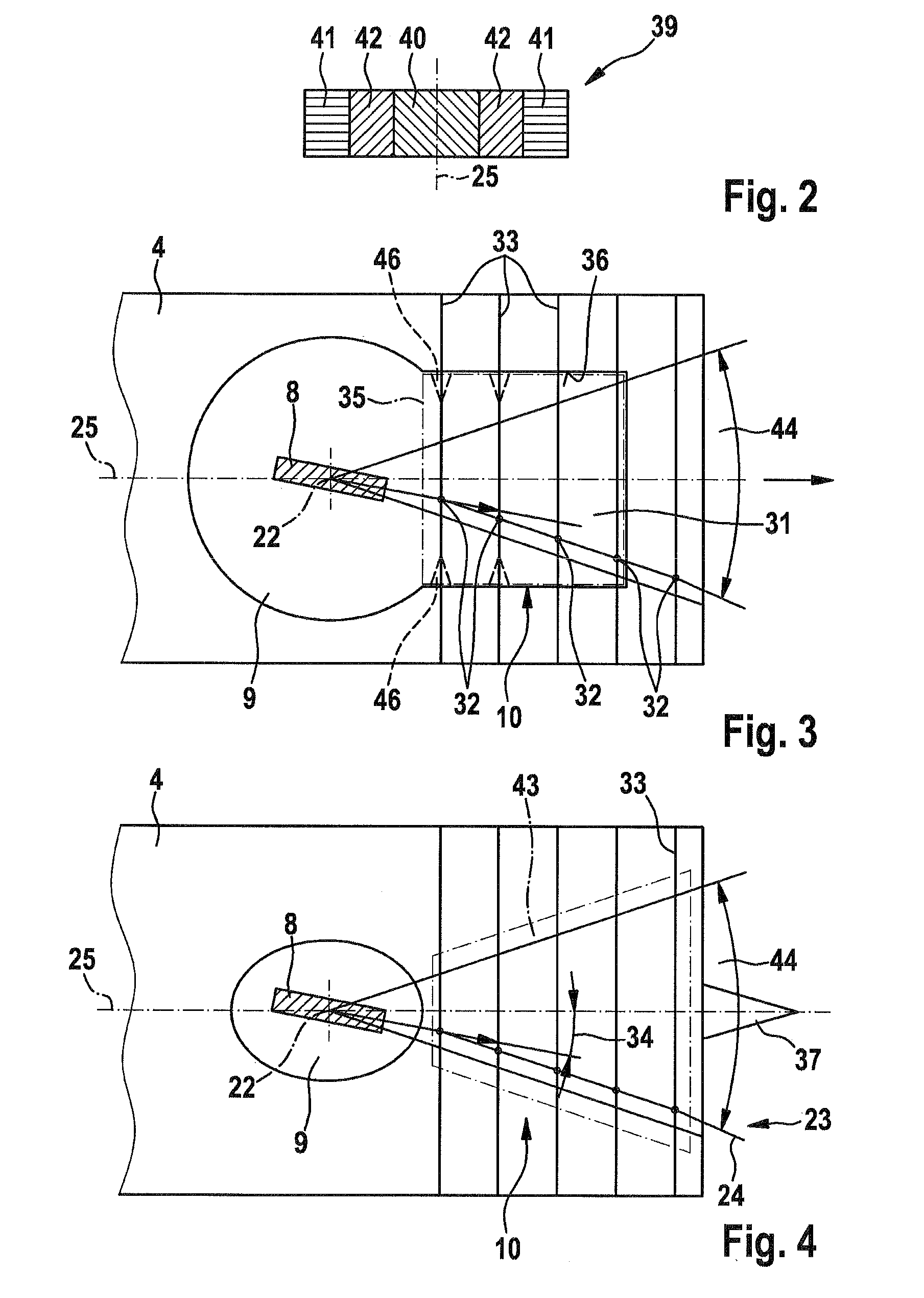Power tool, particularly a hand-held power tool
a power tool and hand-held technology, applied in the field of hand-held power tools, can solve the problems of reducing affecting the quality of work that can be achieved, so as to reduce the work to be performed by the user
- Summary
- Abstract
- Description
- Claims
- Application Information
AI Technical Summary
Benefits of technology
Problems solved by technology
Method used
Image
Examples
Embodiment Construction
[0018]FIG. 1 shows, as an example of a power tool 1, a hand-held machine in the form of a jigsaw 2 that comprises a housing 3 and is supported on a work piece 5 by a base plate 4.
[0019]Jigsaw 2 comprises, in the front, relative to the working direction, a saw blade 8 as the working tool 7. In the working mode, it engages in work piece 5, on which jigsaw 2 is displaceably supported using base plate 4 thereof.
[0020]In the embodiment, jigsaw 2 is designed such that a viewing field 10 results for the user that preferably extends at least across the range of working region 9, which is determined by saw blade 8 and is illustrated in FIGS. 3 and 4 and, as shown, typically extends beyond working region 9 in working direction 6 to provide the user with the best possible overview of the working conditions, including those to come.
[0021]Housing 3 of jigsaw 2 is substantially conventional in design and comprises a U-shaped handle 11 which is disposed opposite—in the vertical direction—to base p...
PUM
| Property | Measurement | Unit |
|---|---|---|
| area | aaaaa | aaaaa |
| color | aaaaa | aaaaa |
| distance | aaaaa | aaaaa |
Abstract
Description
Claims
Application Information
 Login to View More
Login to View More - R&D
- Intellectual Property
- Life Sciences
- Materials
- Tech Scout
- Unparalleled Data Quality
- Higher Quality Content
- 60% Fewer Hallucinations
Browse by: Latest US Patents, China's latest patents, Technical Efficacy Thesaurus, Application Domain, Technology Topic, Popular Technical Reports.
© 2025 PatSnap. All rights reserved.Legal|Privacy policy|Modern Slavery Act Transparency Statement|Sitemap|About US| Contact US: help@patsnap.com



